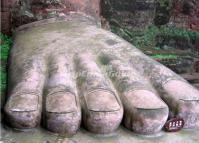Xuancheng City
The city is situated where the mountainous area in the southern part of Anhui Province meets the plain on the lower and middle reaches of the Yangtze River. It exercises jurisdiction over one district, one city and five counties, i.e., Xuangzhou District, Ningguo City, and Langxi, Guangde, Jingxian, Jinxi and Jingde counties. It covers an area of 12,340 square kilometers and has a population of 2.73 million.
Xuancheng borders Mount Tianmu in the east, the Yellow Mountain in the south and Mount Jiuhua in the west. It is blessed with gorgeous natural landscapes, such as Jingting, Bojian, Shuixi and Longxu mountains, which are covered with verdant trees and decorated with undulating peaks and towering crags. Xuancheng City contains the Qingyi River and Shuiyang rivers, beautiful Nanyi, Taiping and Qinglong lakes, and three nature reserves – the Qingliangfeng, Banqiao and Chinese Aligator Lake – which not only abound with rare animals and exotic plants, but are also picturesque in their own right. In addition, Xuancheng boasts numerous historical sites. Examples are the Xietiao Tower, which joins the Yellow Crane Tower, Yueyang Tower and King Teng Tower to be the top four towers in the area south of the Yangtze River, Jingting Mountain which is known as the “Poem Mountain in Area South of the Yangtze River,” the Twin Pagodas in the Guangjiao Temple, which is a key cultural relic site under state protection, and the Taiji Karst Cave.
Thanks to its countless cultural relics and intoxicating natural scenery, Xuangcheng enjoys a reputation of being the First Cultural City in Anhui. It is also often said that Xuancheng has since ancient times been home to poets due to a wealth of poems left by many famous poets, such as Xie Tiao (464- 499), Li Bai (701-762) and Du Mu (803 -853).












